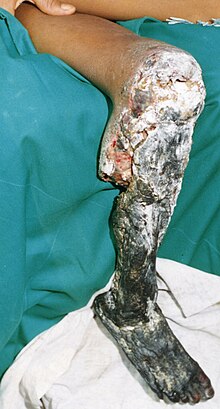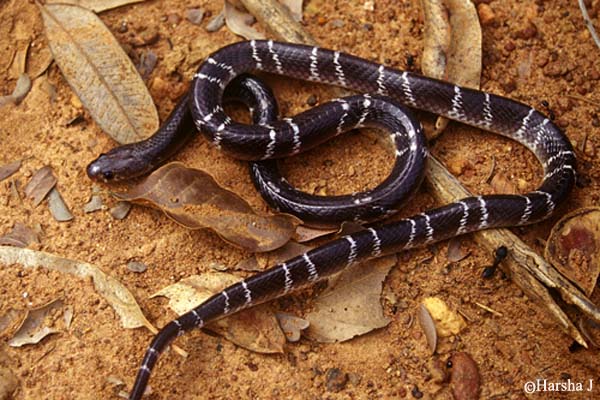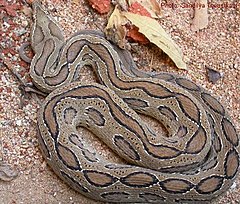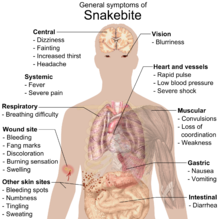| hit counter |
Sunday, April 18, 2010
Thursday, April 8, 2010
Dog Bite

RABIES !! isn't it a scary word ? To me its the worst disease one can get in this whole world . So far , I have seen 8 patients who were infected with rabies dying infront of my eyes , NO ONE COULD NOR CAN SAVE THEM !! Once infected , 100 % death for sure , and believe me its the worst way to die !!
RABIES on the other hand is a 100 % preventable disease by vaccination ( before or after the bite too )
According to World health organisation , around 55,000 people die because of rabies around the globe , out of which 31,000 are from Asia .
In India most common way of getting rabies is through unvaccinated stray dogs ,

but there are other animals that can spread too . they are ,
1) Racoon

2 ) FOX

3 ) BAT

4 ) CAT

5) SKUNKS

6)Ground hogs

How do you get RABIES ?
People and animal get rabies if they are scratched or bite by an animal that already has rabies .
Rabies is carried by the saliva of an animal with rabies !!
How does Rabies make you sick ?
Once inside the body , the virus travels along the nerves to the spinal cord to the brain which leads to death ultimately .


<-------- for example if the rabid dog bites here , the virus travels from the spinal cord to the brain and causes the disease ( virus travels at a speed of 3 mm per day approximately )
MICROSCOPIC PICTURE OF RABIES VIRUS :

SYMPTOMS :
The incubation period of rabies can vary from person to person ( this is the time between exposure and actually getting the symptoms ) . It may take several weeks to months after an exposure , before people become sick with rabies .
The symptoms start with a
1) headache , fever and sore throat ,
2) leading to nervousness , confusion ,
3) pain or tingling at the site of the bite
4)Hallucinations :
- seeing things that are not really there
5)Hydrophobia
-" fear of water " due to spasms in the throat
6) Aerophobia
- fear of wind or when air is blown
7)Paralysis
-Unable to move parts of body
8) Coma
9) Death
What do we do as a FIRST AID ?
1) Wash the wound with plenty of water and soap .

Soap reduces infectivity by breaking up the out coating of the virus and thereby decreasing the viruses effect . So washing with plenty of soap and water is very much advised .

There are two types of vaccination ,
1)Purified tissue culture vaccine ( preferred among the others like nerve tissue vaccine , etc )
2)Anti-rabies Immunoglobulin
Not all the bites would require the above vaccine , depending on the WHO's classification the injections are given .
WHO ( world health organisation ) classifies dog bites as following
- Category I: touching or feeding suspect animals, but skin is intact
- Category II: minor scratches without bleeding from contact, or licks on broken skin
- Category III: one or more bites, scratches, licks on broken skin, or other contact that breaks the skin; or exposure to bats
For Category 2 :- Administer Vaccine ( purified tissue culture vaccine ) immediately . Stop treatment if animal remains healthy for 10 days after contact
For Category 3 :- Administer anti-rabies immunoglobulin and vaccine immediately . Stop treatment if animal remains healthy for 10 days after contact .
Dose and schedule :

Vaccine :
Post-exposure (after the bite) :-
one injection on days 0 , 3 , 7 , 14 , 30( 0 is considered as the day of first injection given and not the day of bite)
Pre-exposure ( before the bite , anybody can take this ) :-
One injection on day 0 , 7 , 28 , followed by 1 year later and 3 years later .
Important Information :
The vaccine should be given on the arm only , should never be given in the buttock , except for small children where it can be given on the thighs .

Anti-Rabies Immunoglobulin are of 2 types :
1) Anti-rabies serum , dose is 40 IU/kg ( cost-effective , risk of allergy present because it is extracted from horse blood )
2) Human Immunoglobulin , dose is 20 IU /kg ( Highly costly , risk of allergy is very less because it is produced by biotechnology)
Half of Anti-rabies immunoglobulin must be given around the bite wound and half on the arm .
NOTE :

Suturing of the dog bite should be avoided as much as possible , if at all it needs suturing then lot of gaps should be left while suturing , because there is a possibility of spreading the rabies virus faster if sutured fully

THANK YOU FOR YOUR PATIENT READING !
Sunday, April 4, 2010
Snake bite


 According to world health organisation (WHO) , an estimated 2.5 lakh Indians are bitten every year out of which 50,000 die . India is effectively the snakebite capital of the world , recording the highest death rate !!!
According to world health organisation (WHO) , an estimated 2.5 lakh Indians are bitten every year out of which 50,000 die . India is effectively the snakebite capital of the world , recording the highest death rate !!!Not all the snakes are poisonous , there are over 2,700 species of snakes in the world of which around 450 are venomous .India is a home for 13 highly poisonous snake species .
The following picture is a 20 year old guy , who had to lose his leg because of the wrong method of first aid ( age old myths ). Correct First Aid given to the snake bite victim is of utmost importance .

The common snakes in India are :
1) COBRA

Cobra is very commonly seen venomous snake in India . It is easily identified by its hood . It is toxic to the nervous system of the human body , it can also be toxic to the heart .
2 ) BANDED KRAIT

Krait's mainly bite in the night , they are quite lazy and submissive during the day unless they are provoked . Kraits are toxic to the nervous system as well . There has been a case report of a bullock bit by a krait and the bullock died within 60 minutes !!!
3) COMMON KRAIT

Common Krait is highly venomous snake in India . I repeat , Common Krait is highly venomous snake !!!! have you ever heard of cannibals among snakes ?? Common kraits are cannibals among snakes , they eat the younger common krait's . The venom is highly toxic to the nervous system !! It also bites more commonly in the night .
4) RUSSELL'S VIPER :

Who is Russell's ? its the name of the doctor who first described it ., Dr.Patrick Russell ( 1726 - 1805) Russell's viper's venom is toxic to the blood , like it causes unclotted bleeding for a prolonged time from various sites of the body . The victims can bleed to death !!
5) SAW-SCALED VIPER :

These snakes are quick-tempered , they are toxic to the blood too .The have scaled skin with serrated keels , which produce a a sizzling sound when it becomes aggressive , so when you hear this sound in a forest or outskirts , watch out for this deadly species !!!
6) HUMP NOSED VIPER :

As it is named its nose has a hump . During the day it gets coiled in the bushes , bites in the night . When annoyed it will vibrate its tail . It is toxic to the blood and more commonly can cause kidney failure .
How to identify a poisonous snake ?
1) vertical slit pupils
2) small pit indentation between the snake's eye and nostril
3)Arrowhead-shaped head
How to identify a non-poisonous snakes ?
1) round eyes
2) no pit
3) round head
When bitten by a snake there would be a bite (fang) mark like the one shown below

What one could have after snake bite :

1) Oozing of non-clotted blood from the bite site
2)Severe pain
3) Numbness
4) Local swelling

5) giddiness
6) breathing difficulty
What to be done as a FIRST AID ?
1) Do not move the limb or the affected part of the body , as the poison may spread into the circulation faster.
2) Using a cloth or a towel wrap the affected limb from the most dependent position of the limb covering the entire limb .
3) Don't wrap the limb tightly , it should be of moderate degree . By doing it tightly you may cause the limb to die .



4) DO NOT try to bring the snake to the hospital alive or dead , that can create a situation even worse as you might get bitten again
5) If possible , take a picture of the snake that bit , if that's not possible try to remember what exactly the snake looked like so that the doctor can give you the right anti-venom .
5)There is a common saying " a set of keys is the best first aid for snake bite " meaning to say transporting the victim to the nearby hospital as quickly as possible .
6) The doctor will want to know if any of the signs and symptoms are noticeable on the journey to the hospital .
a)Difficulty breathing
b)Drooping eyelids
c)Bleeding from the gums or any unusual bruising appearing
d)Increase in swelling .Carry a pen and mark the limit of the swelling every 10 minutes

(note in the above picture the change in the marking of the pen , as the swelling increases )
e)Drowsiness
f)Difficulty speaking
g)Bleeding from the wound that does not stop
DON T'S AND MYTH'S
1) DO NOT apply tourniquet tightly

2) Do not incise or try sucking it ! , that's only for movie gimmicks ;-)

3) Do not apply ink , turmeric powder , ice , leaf extracts on the bite site as it may decrease the immune response

3) There are some people who believe that they shouldn't sleep the night snake bit them , its only a myth !!
THANK YOU FOR YOUR PATIENT READING !!
Friday, April 2, 2010
What is first aid ?
First aid is timely event done to save life or limb threatening injuries using common sense and available resources .
Subscribe to:
Posts (Atom)